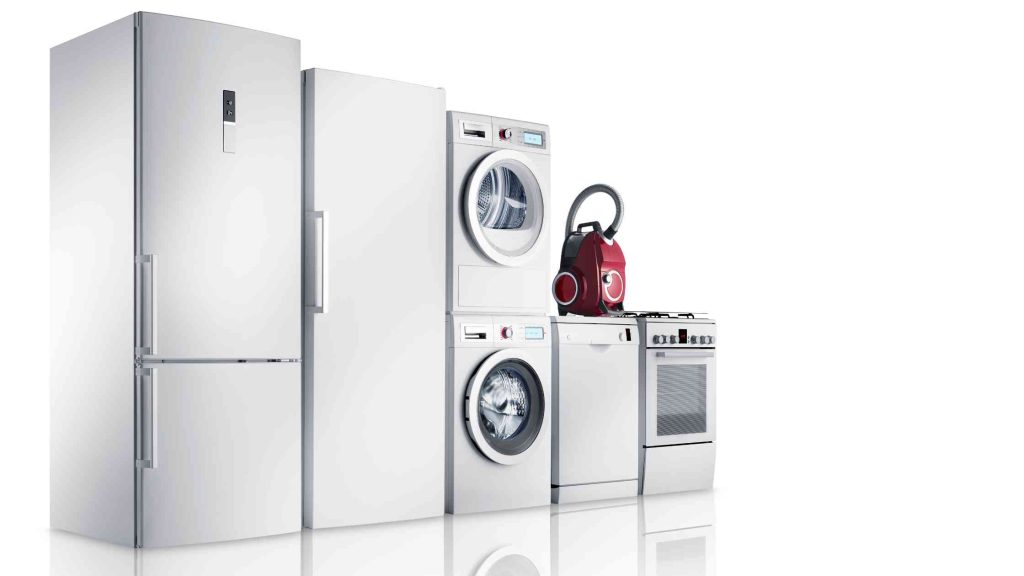The durable goods business refers to the economic sector that involves producing, selling, and distributing consumer goods designed to have a long lifespan or extended period of use. Durable goods are tangible products used over an extended period and not consumed quickly. Examples of Durable Goods Businesses include appliances, furniture, vehicles, electronics, and machinery.
The durable goods business encompasses various product lifecycle stages, including manufacturing, distribution, retail sales, and after-sales services such as repairs and maintenance. It involves manufacturing durable goods and selling them to consumers through wholesalers, retailers, and e-commerce platforms.
The durable goods business is an essential component of the economy, contributing to economic growth, employment, and consumer spending. The performance of the durable goods sector is often used as an indicator of consumer confidence and overall financial health, as consumers tend to postpone investments in durable goods during economic downturns or when facing uncertainty about the future.
The durable goods business is subject to market trends, consumer preferences, technological advancements, and government regulations. It requires strategic planning, product invention, marketing, and supply chain management to be successful in a competitive marketplace.
Types of Consumer Durables
Consumer durables are goods intended for long-term use and provide utility and convenience. There are various types of consumer durables, which can be broadly categorized into the following:
Appliances:
These include household appliances such as refrigerators, washing machines, dishwashers, ovens, microwaves, vacuum cleaners, air conditioners, and water heaters.
Furniture:
This category includes durable goods for furnishing homes and offices, such as sofas, beds, tables, chairs, desks, cabinets, and bookshelves.
Electronics:
Consumer electronics are durable for entertainment, communication, and information. Examples include televisions, smartphones, laptops, tablets, cameras, gaming consoles, and audio systems.
Vehicles:
These include motorized vehicles designed for transportation, such as cars, motorcycles, bicycles, and recreational vehicles like boats, RVs, and ATVs.
Home Improvement Products:
This category includes durable goods for home improvement and maintenance, such as power tools, gardening equipment, paint, lighting, and bathroom fixtures.
Personal Care Products:
These include durable goods used for personal care and grooming, such as hairdryers, curling irons, electric shavers, and toothbrushes.
Sports and Fitness Equipment:
This category includes durable goods for sports and fitness activities, such as treadmills, exercise bikes, weights, sports gear, and outdoor equipment like camping gear and bicycles.
Jewelry and Watches:
These are durable goods worn as accessories, such as rings, necklaces, bracelets, earrings, and watches.
Musical Instruments:
This category includes durable goods used for musical purposes, such as guitars, pianos, drums, and keyboards.
These are just some examples of consumer durables, and the range of products in this category may vary depending on market trends, technological advancements, and consumer preferences. Consumer durables are typically higher-priced items expected to last relatively long and play an essential role in consumers’ daily lives and lifestyles.
Inventory management for durable goods business
Inventory management is critical to running a durable goods business efficiently and effectively. Proper inventory management helps ensure that the correct products are available in the correct amounts, at the right time, and in a suitable condition to meet client needs while minimizing costs associated with overstocking or stockouts. Here are some critical considerations for inventory management in a durable goods business:
Demand forecasting
Accurate demand forecasting is essential for effective inventory management. Businesses should use historical sales data, market trends, customer feedback, and other relevant information to forecast demand for their durable goods business. It helps determine appropriate inventory levels and replenishment schedules to avoid stockouts or overstocking.
Optimal inventory levels
Businesses must balance maintaining sufficient inventory levels to meet customer demand and avoiding excess inventory that ties up capital and incurs holding costs. They should establish optimal inventory levels based on demand forecasts, lead times, and desired service levels. It can be achieved through inventory optimization techniques such as economic order quantity, just-in-time inventory, or vendor-managed inventory.
Supplier management
Building strong supplier relationships is crucial for effective inventory management. Businesses should work closely with suppliers to establish clear communication channels, negotiate favorable terms, and maintain reliable delivery schedules. It helps minimize stockouts, delays, and disruptions in the supply chain.
Inventory tracking and monitoring
Having robust systems to track and monitor inventory is essential. It includes using inventory management software or systems that provide real-time visibility into inventory levels, stock movements, and reorder points. Regular inventory audits should also be conducted to ensure accuracy and identify discrepancies.
ABC analysis
Implementing ABC analysis helps classify inventory items based on their value, usage, and criticality. It allows businesses to prioritize their inventory management efforts and focus on the most important things for their operations while optimizing inventory levels for low-value or low-demand items.
Product lifecycle management
Durable goods typically have different stages: introduction, growth, maturity, and decline. Managing inventory according to the product lifecycle is essential to avoid obsolescence, overstocking, or stockouts. For example, higher inventory levels may be needed during the introduction or growth stage to meet increasing demand. In contrast, during the decline stage, inventory levels may need to be reduced to avoid excess stock.
Returns and repairs
Durable goods may require repairs or returns due to defects, warranties, or customer returns. Managing returns and repairs effectively is critical for inventory management, including processes for receiving, inspecting, repairing, or disposing of returned items and ordering spare parts or components for repairs.
Demand variability
Durable goods businesses may experience demand variability due to seasonality, market trends, or changing customer preferences. Managing demand variability is crucial for inventory management, including safety stock planning, buffer stock strategies, or dynamic pricing and promotions to adjust to changing demand patterns.
Collaboration with other departments
Effective inventory management requires cooperation and coordination, such as sales, marketing, operations, and finance. Close communication and alignment between departments can help optimize inventory levels based on demand, sales strategies, production schedules, and financial goals.
Continuous improvement
Regularly reviewing and analyzing inventory performance metrics, pinpointing areas for progress, and executing corrective actions are essential for continuous improvement in inventory management. It may include evaluating supplier performance, optimizing reorder points, reducing stockouts, minimizing holding costs, and enhancing overall inventory accuracy and efficiency.
Implementing effective inventory management practices can help durable goods businesses optimize inventory levels, reduce costs, improve customer satisfaction, and enhance overall operational efficiency. It requires a proactive and data-driven approach, continuous monitoring, and regular adjustments based on
How ERP solutions are beneficial for durable goods business
Enterprise Resource Planning (ERP) solutions can benefit durable goods businesses. ERP systems provide a comprehensive and integrated approach to managing various aspects of a company, including inventory management, sales, procurement, production, finance, and more. Here are some ways ERP solutions can benefit durable goods businesses:
Improved visibility and control:
ERP systems provide real-time visibility into various business processes and operations, allowing businesses to have better control over their inventory levels, production schedules, sales orders, and financials. It enables more accurate demand forecasting, efficient inventory management, and better decision-making.
Enhanced inventory management in the durable goods business
ERP solutions can streamline inventory management by automating inventory tracking, stock movements, reordering, and demand planning. It helps optimize inventory levels, reduce stockouts and overstocking, and minimize holding costs, improving profitability.
Efficient procurement and supply chain management:
ERP systems can streamline procurement processes, including purchase orders, supplier management, and performance tracking. It helps improve procurement efficiency, reduce lead times, and enhance supply chain visibility and coordination.
Integrated sales and order management:
ERP solutions enable seamless integration between sales and order management processes, allowing businesses to efficiently manage sales orders, track order status, manage pricing and discounts, and handle order fulfillment. It helps improve customer satisfaction, reduce order errors, and enhance order processing efficiency.
Streamlined financial management:
ERP systems provide robust financial management capabilities, including accounts payable, accounts receivable, general ledger, and financial reporting. It Helps streamline financial processes, improving financial visibility and ensuring accurate financial reporting for informed decision-making.
Enhanced production planning and scheduling:
ERP solutions can optimize production planning and scheduling processes by providing visibility into production capacity, resource allocation, and production schedules. It helps improve production efficiency, reduce lead times, and enhance on-time delivery performance.
Better data management and reporting:
ERP systems provide a centralized database for managing data across various business processes, ensuring data accuracy, consistency, and integrity. It enables businesses to generate accurate reports, analytics, and insights for informed decision-making.
Scalability and flexibility:
ERP solutions are scalable and can adapt to the changing needs of durable goods businesses as they grow and evolve. They can accommodate increased transaction volumes, new product lines, additional warehouses or locations, and changing business requirements.
In summary, ERP solutions can provide durable goods businesses with improved visibility, control, and efficiency across various business processes, resulting in optimized inventory management, streamlined operations, enhanced customer satisfaction, and improved overall profitability.

Vijay comes with a vast experience in ERP and enterprise solutions space with about 20 years of experience in various packaged application like Acumatica, SAP, Orion, Salesforce.com, SugarCRM and, SalesLogix.

